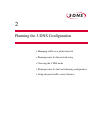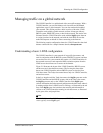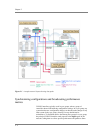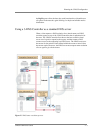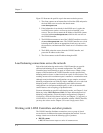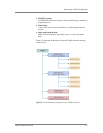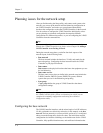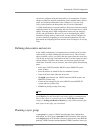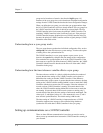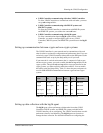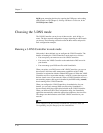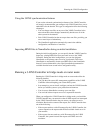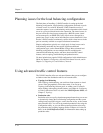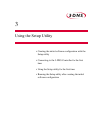
Chapter 2
2 - 6
Planning issues for the network setup
After you finish running the Setup utility, and connect each system to the
network, you can set up the network and load balancing configuration on
one 3-DNS Controller, and let the sync group feature automatically
broadcast the configuration to the other 3-DNS Controllers in the network.
You do not have to configure the 3-DNS Controllers individually, unless
you are planning an advanced configuration that requires different
configurations for different data centers, or you are configuring the 3-DNS
Controllers from the command line.
Tip
If you are configuring additional 3-DNS Controllers in a network that
already has a 3-DNS Controller in it, please review Chapter 10, Adding a
3-DNS Controller to an Existing Network.
During the network setup phase, you define four basic aspects of the
network layout, in the following order:
• Base network
The base network includes the interfaces, VLANs, and trunks for the
network topology. Configuring the base network installs the 3-DNS
Controller in your physical network.
• Data centers
Data centers are the physical locations that house the equipment you use
for load balancing.
• Data center servers
The data center servers that you define in the network setup include the
3-DNS Controller, BIG-IP systems, EDGE-FX systems, and host
systems that you use for load balancing and probing.
• Sync group
A sync group defines the group of 3-DNS Controllers that shares
configuration settings.
Note
During the setup phase of configuration, we recommend that you connect to
the 3-DNS Controller from a remote workstation from which you can
complete the remaining configuration tasks using the web-based
Configuration utility.
Configuring the base network
The 3-DNS Controller interfaces and the related topics of self IP addresses,
VLANs, and trunks are collectively referred to, in this manual, as the base
network. The base network, or at least an initial version of it, is configured
when you run the Setup utility for the first time. The initial base network
configuration also includes such things as the default route for the 3-DNS
Controller, fully qualified domain names, and certificate information that




